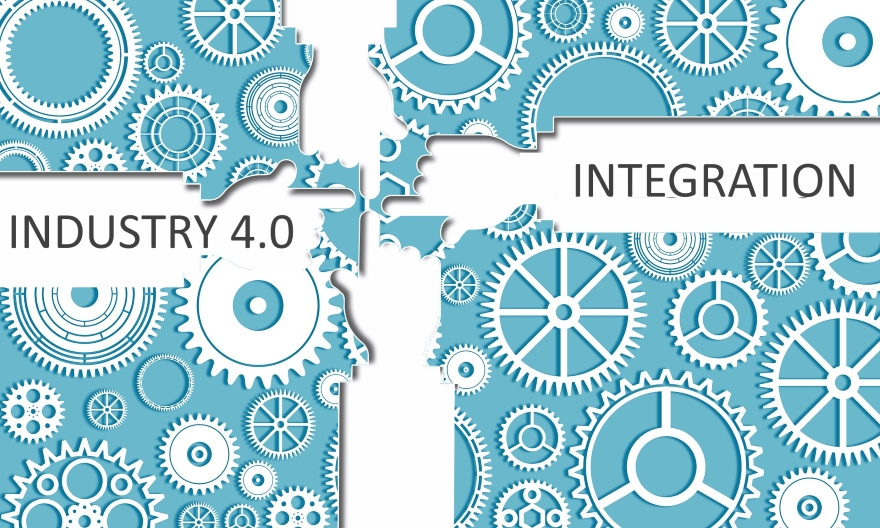Numbers are a businessman’s best friend
People in our industry love talking numbers, and you can’t blame them for that. For centuries now, numbers stand at the heart of all scientific and technological research.
Statistics and benchmarks are also a prominent part of every business endeavor. Without numbers, we wouldn’t be able to measure cost, efficiency or ROI.
Industry 4.0 (yes, the number is part of the name, no surprise there 🙂 ), AKA our current automation, IIoT and AI revolution, has given us some nice looking numbers to talk about. For instance, Oxford economics says that IIoT technology, the emblem of industry 4.0, is already used by industries accounting for 62% of the G20’s GDP, and that by 2020, $500B will be spent on IIoT technologies worldwide. Moreover, the value created by IIot by that year is estimated at $1.28T.
These impressive numbers should not come as a surprise, at least to anyone who’s living in the world of advanced manufacturing solutions. They’re the result of tremendous efforts, made by companies such as mine, and others, who are pushing the boundaries of how manufacturing is done and creating new efficiency standards.
Furthermore, if I was asked to select just two single elements that make it possible for Plataine’s tools to perform at the highest levels, I’d say: data and AI engine. Huge amounts of industrial time series data. Simply put, optimization systems are turning data into smart predictions, provide actionable insights and offer optimization recommendations (for more info about this process, visit our blog post here). We use data collected on the entire production floor to diagnose problems, solve them, and dramatically improve the production record.
The (not so) silent partner: Your good old existing & legacy systems
However, this transformation is many times slowed down by hesitant manufacturers. You may ask: Why on earth wouldn’t a factory that wants to beat competition embrace this new technology and onboard new solutions as soon as possible? The numbers, after all, are extremely convincing. Well, as they say today, “it’s complicated”.
For manufacturers, it’s complicated because there are usually other parties in this relationship, and they have been around for years. I’m talking about the good old data and legacy systems that are already around.
Making everyone work together

Admittedly, it’s a bit difficult to find statistics on how deep is the industry’s attachment to traditional and legacy systems (such as data software, excel files, ERP systems, MES systems and alike). There’s no study of these systems’ role in deciding whether to advance to IIoT solutions or not, and what the configuration efforts are. But from countless discussions with industry professionals, from spending hours and hours in sales meetings, and simply by being a part of this field, it’s evident to me that there are real pains there.
As was succinctly expressed in an Industryweek article lately: “Coping with legacy systems and interoperability when implementing new technologies, systems, and processes (the challenge)… is not openly addressed”.
Talking openly about data-systems integration pains
That’s a very serious matter. And an important one, too. In the software and hardware industry for example, a shift to a new programming language, or simply a version update, can become a hotbed for problems, if not treated correctly. Manufacturing is different. We’re not dealing with programming languages here, but with heavy machinery, MES, ERP systems and so on, that were sometimes implemented even 20 years ago.
Change is never easy, particularly when a factory is used to a certain working protocol (‘working’ being the key word here). Moreover, a change can be frightening when the operation leans on multiple software that is connected to hardware, and was integrated with sweat and blood. Now, any change has the potential of demanding huge resources, resulting in production downtime, leading to data loss, unstabilizing the operation and ending with a negative ROI and regret. That’s the biggest fear of manufacturers. Indeed, it sounds intimidating.
Do you see the elephant in the room?

This concern holds many manufacturers back from progressing along with technology and implementing new systems, like full manufacturing optimization systems that lean on IIoT and AI technologies.
Some extremists even pitch to replace all legacy systems with new ones, whenever there’s a shift in the factory’s new technologies. I think that it’s not a practical approach.
Besides, this system integration pain could be solved, if managed correctly. No need for harsh actions. I will demonstrate that here below.
But, just to conclude, while integrations make a huge concern for manufacturers, somehow this topic doesn’t get the coverage it deserves. I don’t see enough vendors that openly address the subject, nor do I see enough “how-to” articles that help shed light.
My personal belief is that we do need to discuss it openly. The best way to find an optimal solution is to expose the difficulty to sunlight.
Integration as the responsibility of the new technology vendor

Trying to think about the best practices for integrating existing data systems to new ones, I realized that I must speak of the core obstacle that is the fact that every factory has its own specific systems and difficulties, facing such an integration process. The complexity in manufacturing is such that each factory floor has its own protocol for doing things, its own specific machinery, sensors, supportive data-software and to top it all off: its own set of working habits. Of course, many factories share similar characteristic and systems, but when implementing an IIoT solution, it’s usually done in a highly individual way, taking into consideration every detail of the factory’s workflow.
The Plataine Way
In a sense, the difficulty in “generalizing” this problem is a good reference for how Plataine is treating it. My two cents about the big issue of upgrading from legacy systems to the IIoT is exactly this: it’s the responsibility of us, the vendors that bring in new technologies and systems. The vendor, be it Plataine or anyone else, must come up with features and professional services that solve specific integration issues. This includes adding connectivity features (both for 3rd party software and hardware) and appropriate ongoing support for the mission of integrating all operational and data systems.
The vendor is the one that has the relevant experience with these kinds of integrations. It’s the vendor’s responsibility to fulfill its promise for the ROI and the seamless onboarding, minimal downtime and no overhead on the factory staff. There’s no other way.
Building trust among managers and workers
A crucial aspect of any integration is the proper education of the relevant workers. They need to feel comfortable with how the new solution is implemented, in order for the operation to succeed. The vendor’s support and availability have a great positive impact here as well.
In general, putting your trust in the new system potential is a real stepping stone towards making it a part of the workers’ daily routine. It’s often not easy to build such trust, especially when incidents involving factory automation are a burning topic. Still, it’s absolutely possible to reduce worries regarding technology (in workers and managers alike) by making them more knowledgeable about the system they’ll be using, and how it’s going to improve their working environment.
The way we run integrations in Plataine
Regarding integration, today we know that customers are concerned about ‘integration projects’ due to their past experience in deploying giants such as SAP, Oracle and Siemens. However, integration shouldn’t be painful, and to their surprise, a typical Plataine IIoT deployment takes between two weeks to couple of months, including the integration. What enables us to do that is focus. Our approach is to identify the biggest pains and tackle them first with the minimum required integration work, rather than push our complete offering. A critical step is to perform a deep process analysis by engineers who have been to dozens of facilities and have intimate knowledge of the industry. Eventually, the end-to-end view we get enables us to weave a complete digital thread, eliminate manual or unnecessary steps, and introduce our ‘Digital Assistants’ that provide recommendations and insights to the users and managers on the factory floor.
When is the future?
The pains I’ve discussed here are real pains, coming from real people working in real factories. While the advantages offered by IIoT-based optimization systems are tremendous, I’m fully aware that it isn’t possible to change the way a factory is working within one day. Moving on to be better, more efficient, faster, more accurate… this is just the future versus now for most workers. To make a real shift, one has to run it carefully, prioritize steps, not bite more than they can chew and yes, also take a leap of faith, at least in some senses.
You’re invited to read our suggestions as to how to pick your future IIoT based solutions vendor here














